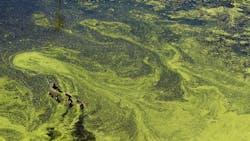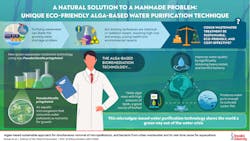Researchers use algae to treat wastewater
Recently, an international research team explored a new wastewater treatment technology based on algal bioremediation. Their study is published in Science of the Total Environment.
Algae rapidly cover water bodies with a green film or cause red tides, using the nitrogen, carbon, phosphorous, or heavy metals present in water as nutrition. A high algal load in the water then creates competition for nutrients and sunlight with other microorganisms, causing a reduction in the number of bacteria present in the water. These are some of the properties that make algae promising wastewater purification agents. They’re also self-sustaining and cost-effective as a wastewater treatment agent.
For their experiments, the researchers collected the microalgae strain from a natural pond and cultivated it in artificial tanks of raw urban wastewater which contained various heavy metal pollutants and antibiotic-resistant bacteria. After 14 days of cultivation, they measured three parameters in these tanks: the water quality, and growth and biochemical composition of P. pringsheimii. They also assessed the possibility of using the microalgae-treated water for fish farming.
The findings of this pilot-scale study were encouraging. The algae significantly improved the water quality by removing heavy metals and harmful microorganisms.
Dr. Chauhan explains enthusiastically: “After the treatment, we observed that the levels of water pollution indicators such as chemical oxygen demand (COD), alkalinity, and hardness reduced by 83.2%, 66.7%, and 69.6%, respectively. Moreover, the algal growth naturally nearly eliminated the total bacteria and coliform in the water. We also saw a significant increase in the lipid content in wastewater-grown algal biomass in comparison to the algae grown in the control medium. This means that the algae can be recycled for biofuel synthesis.’’.
Dr. Chauhan is hopeful that their microalgae-based bioremediation technique will pave the way for a greener and more sustainable future.
SOURCE: Shoolini University
Vinod Kumar, et al. Algae-based sustainable approach for simultaneous removal of micropollutants, and bacteria from urban wastewater and its real-time reuse for aquaculture. Science of The Total Environment 774, 2021. DOI: 10.1016/j.scitotenv.2021.145556

